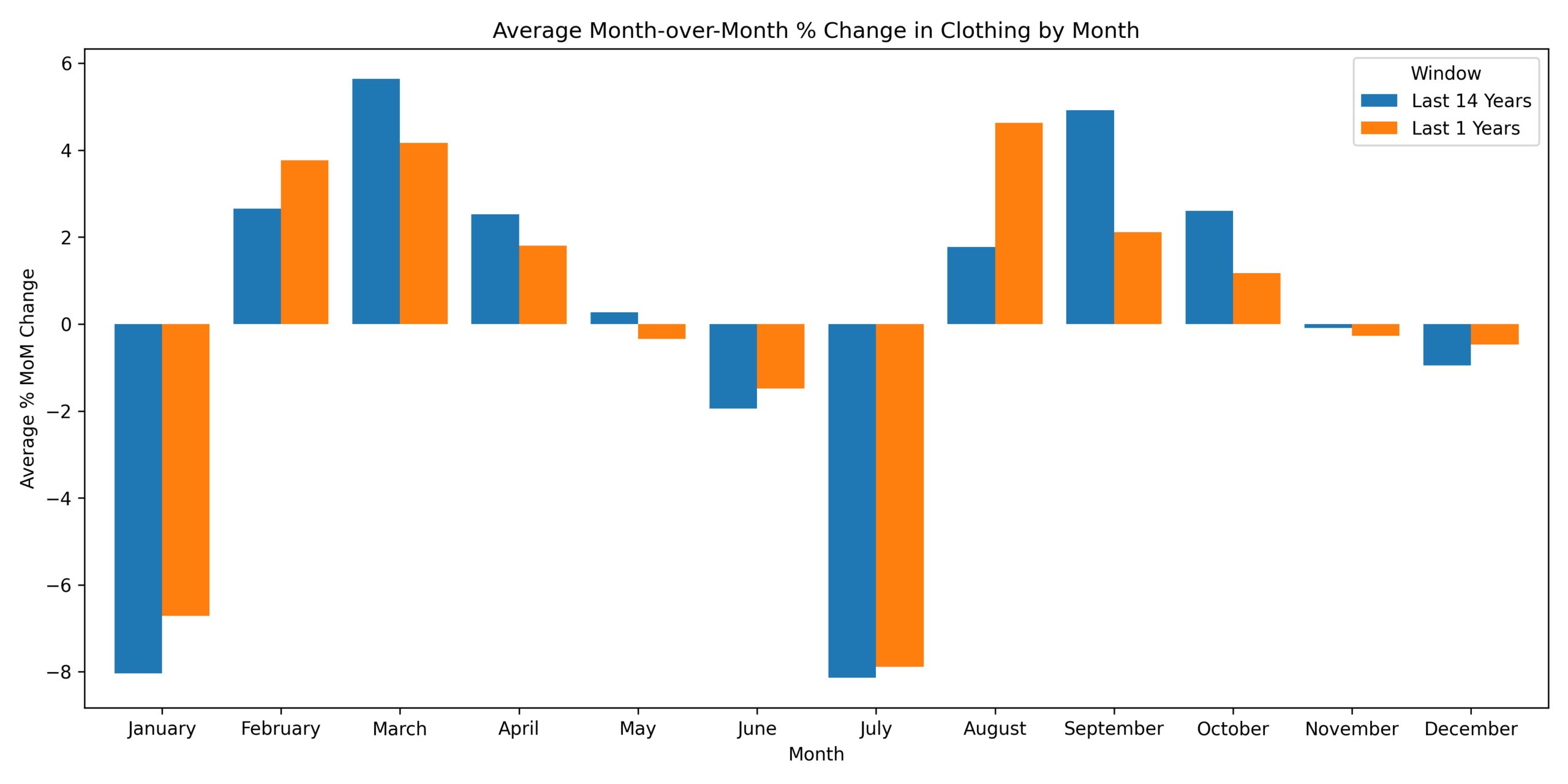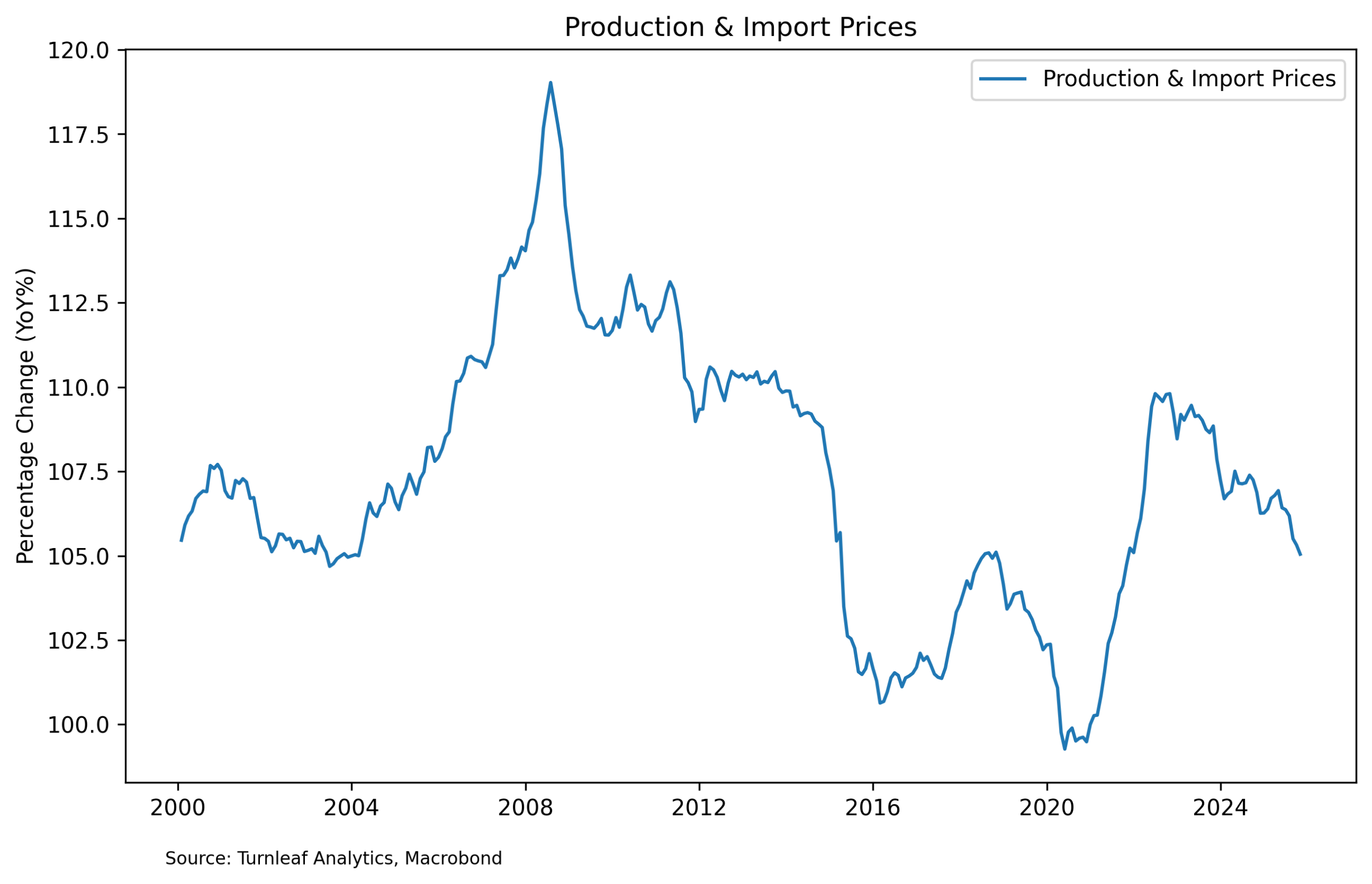Featured Research
Macroeconomic Insights: Switzerland CPI – Inflation Not Hot Not Cold
Last month Turnleaf argued that Switzerland was escaping deflation but still stuck near 0% inflation over the next year, with any firming coming mainly from tax changes and services inflation, while a strong franc kept goods prices pressured. November's 0.02% YoY...
Macroeconomic Insights: Switzerland CPI – Inflation Not Hot Not Cold
Last month Turnleaf argued that Switzerland was escaping deflation but still stuck near 0% inflation over the next year, with any firming coming mainly from tax changes and services inflation, while a strong franc kept goods prices pressured. November’s 0.02% YoY print (Turnleaf: 0.05% YoY) largely validates this view, with discretionary items like package holidays, hotels, cars and food falling, partially offset by higher rents, heating oil and air fares.
Looking ahead, we expect headline CPI to hover around 0% YoY until mid-2026, with brief negative readings as base effects roll through, before returning toward 0% (Figure 1 – PAID). Core CPI should track slightly higher but follow the same path. With the franc continuing to appreciate and energy prices subdued, we see almost no underlying price drift. The only upward pressure comes from: (1) electricity solidarity surcharges covering grid enhancements and steel/aluminium industry aid, and (2) modest services inflation from rents. Importantly, the previously expected VAT increase from 8.1% to 8.8% has been delayed to 2028, removing a key upside risk for 2026.
Seasonal factors dominate near-term dynamics. Travel, clothing and some food categories should see heavy year-end discounting, though franc appreciation hasn’t notably altered these patterns (Figure 2A & 2B). The turn of the year typically brings regulated tariff resets including health insurance premia, rent adjustments with one exception: public transport prices are frozen for 2026. We still expect a modest early-2026 rebound as discounts unwind and annual adjustments feed through, but the magnitude will be smaller than initially anticipated given the VAT delay and transport freeze.
Figure 2A
 Figure 2B
Figure 2B

Producer and import prices confirm absent pipeline pressures. The index has fallen from its 2022 peak of 119 to 105-106, with continued softening through late 2025 erasing the 2023 rebound (Figure 3).
Figure 3

This leading indicator signals goods inflation will remain subdued, leaving any price increases to come from domestic services or regulated tariffs which are both constrained by weak demand. Unemployment has drifted to 3.0% from very low levels, and while lending grows, overall activity remains unspectacular. Housing is the notable exception where rent inflation has been positive, representing the main domestic factor preventing outright deflation. Without rent support, Switzerland would likely be experiencing negative CPI readings more consistently. Oil, shipping costs, and Eurozone/US imported inflation stay benign, while the strong franc continues to act as a structural brake on goods prices (Figure 4).
Figure 4

The persistent inflation undershoot puts the SNB in an uncomfortable position heading into its December 12th meeting. Markets currently price only a 20% probability of negative rates returning, but 2Y government bonds have traded below zero since May 2025, suggesting investors see subzero territory as inevitable. With Switzerland’s debt-to-GDP at just 37% and minimal new bond supply planned for 2026, fiscal constraints aren’t the binding issue. Instead, the economy depends heavily on international trade, particularly with the US and EU, where recent US tariff announcements and hopes for German recovery are needed to weaken the franc and restore export competitiveness.
November’s release confirms Switzerland is operating at the lower boundary of its target with little endogenous pressure to move higher. Near-term, a technical bounce at the start of 2026 is likely, followed by readings fluctuating around zero and occasionally dipping negative. Further out, as seasonal noise fades, the forecast edges up but stays below 1%, supported by rents and slightly firmer energy prices, restrained by muted growth, contained imported inflation and anchored expectations.
Research Archive
Macroeconomic Insights: UK September 2025 CPI Analysis
UK CPI for September 2025 declined to 3.8% YoY, falling below market expectations of 4.0% (vs. Turnleaf estimate of 3.94%). The decline was primarily driven by sustained lower...
Macroeconomic Insights: Japan CPI – Subsidies Reset
Japan’s CPI over the next two months will be shaped by a mix of expiring and newly introduced subsidies. Over the past two years, national electricity and gas subsidies have...
Macroeconomic Insights: Australia CPI – Could Higher Unemployment Change Everything?
Turnleaf expects Australia's 12-month inflation forecast path to remain close to the Reserve Bank's upper bound 3% target range as stronger than expected demand continues to...
Macroeconomic Insights: China CPI — Will the Chinese New Year Be Enough?
China's headline CPI rose to -0.3% YoY in September 2025, still capped by food deflation and soft energy prices. Core CPI printed 1.0% YoY, above headline but still subdued as...
Macroeconomic Insights: United States CPI – Core CPI to Drive Inflation Trends
Core Goods and Core Services are steering U.S. inflation in the second half of 2025. According to Turnleaf’s U.S. inflation models, Core Goods will be driven by short-lived...
WBS Training Palermo Conference 2025
Italy is made up of twenty regions, each of which is very different from another, from Veneto to Lazio to Puglia. Two weeks ago I visited Sicily. Perhaps unsurprisingly for an...
Macroeconomic Insights: United Kingdom CPI Gets a Boost
Turnleaf’s Oct 9, 2025 nowcast for September 2025 prints slightly higher than the Oct 1, 2025 weekly, reflecting a mix of policy and pricing signals that point to firmer levels...
Macroeconomic Insights: France CPI– Consumers are Waiting for Something Bad to Happen
Consumers are waiting for something bad to happen. Industrial weakness and worries about the government dominate the story, and French households are preparing for the worst. As...
Macroeconomic Insights: Poland CPI – The 2025 ‘Cheap Energy’ Party Winds Down
Turnleaf expects Poland’s CPI to average around 3% YoY over the next 12 months. By 2026, the base effects from the 2024 energy surge will fade, leaving food and services as the...
Macroeconomic Insights: South Africa CPI – Got Milk?
Turnleaf’s Headline CPI YoY forecast for South Africa has been revised lower following the unexpected August 2025 print of 3.3% YoY. The shift downwards of the inflation curve is...
Macroeconomic Insights: Hungary CPI Still Has a Long Way to Go
Turnleaf’s September 2025 headline inflation forecast for Hungary over the next 12 months points to an uptick toward 5% YoY by October 2025, followed by a steady decline into...
Macroeconomic Insights: Eurozone CPI – Services Keeping the Economy Running
At the start of 2025, tariffs posed a meaningful downside risk to Eurozone inflation. Yet Eurozone growth has proven more resilient than many expected. The potential loss of...
Gelato and accurate data in markets
I've been subscribing to the FT for many years. Primarily, I read it to keep track of financial markets. FT's longer form pieces complement having access to short articles on...
Macroeconomic Insights: Peru CPI – Seasonality Overshooting Inflation Forecasts
Since May 2025, Peru’s inflation has been consistently undershooting the forecasts of the central bank and economists. Figure 1 shows successive BCRP forecast vintages for...
Macroeconomic Insights: Philippines CPI – Fish Takes a Bite Into Inflation
For the past few months, we have seen our forecasts for the Philippines adjust upwards as the central bank pivots from inflation-defensive to disinflation-offensive. Our...